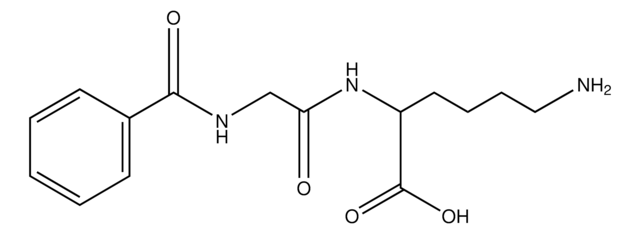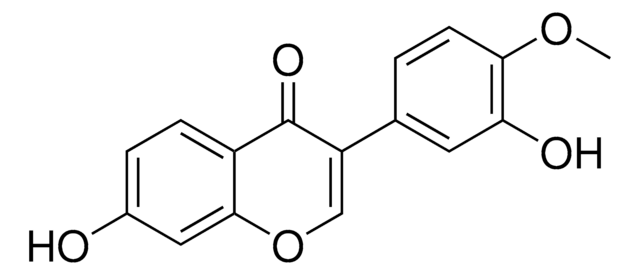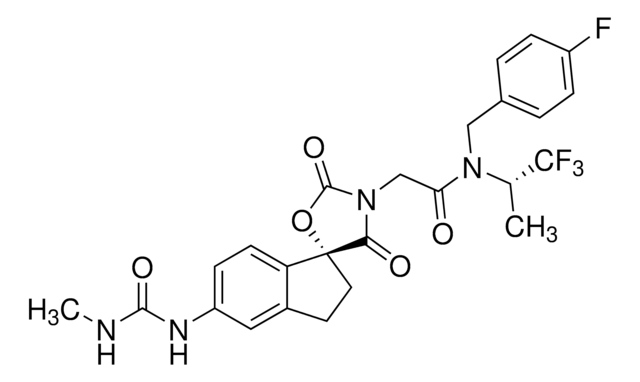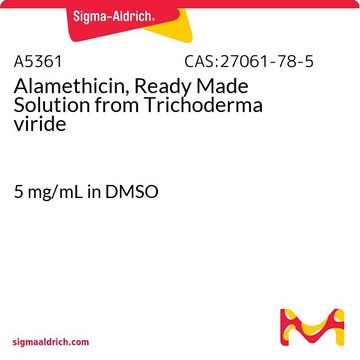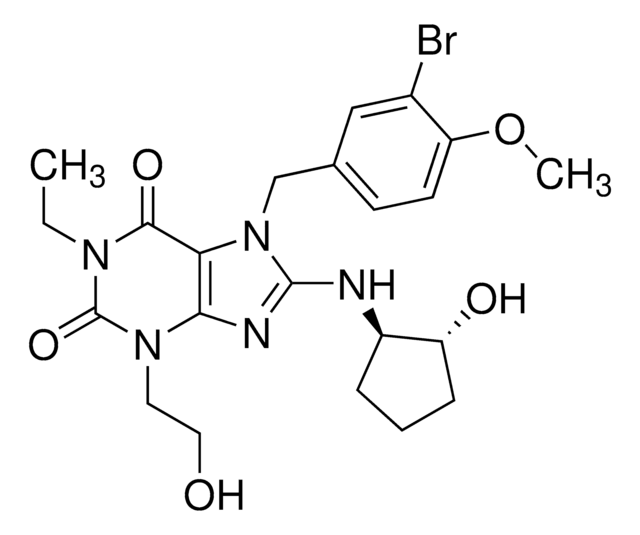詳細
Monoclonal Anti-ATG5 (mouse IgG2a isotype) is derived from the hybridoma ATG5-18 produced by the fusion of mouse myeloma cells and splenocytes from BALB/c mice immunized with human Atg5, conjugated to keyhole limpet hemocyanin (KLH). The autophagy related 5 (ATG5) gene is mapped to human chromosome 6q21 and encodes a 32 kDa protein.
特異性
Mouse monoclonal anti-ATG5 antibody reacts with human, rat, and mouse Atg5-Atg12 complex by immunoblotting (∼56kDa) and immunoprecipitation.
アプリケーション
Monoclonal Anti-ATG5 antibody produced in mouse has been used in western blotting and immunoprecipitation
Omegasomes were shown to localize to autophagosomes by immunohistochemistry using rabbit anti-ATG5 antibody.
生物化学的/生理学的作用
Atg5 (also known as Apg5) is a 32kDa protein that is required for mediating autophagy. Studies have reported that the Atg12-Atg5-Atg16 complex localizes to autophagosome precursors and plays an important role in autophagosome formation. Furthermore, a fragment of Atg5 fragment produced by calpain cleavage is known to have pro-apoptotic properties.
Autophagy related 5 (ATG5), also known as Apg5, is essential for autophagy, a major pathway for bulk degradation of cytoplasmic constituents and organelles. In this process, portions of the cytoplasm are sequestered into double membrane vesicles, the autophagosomes, and subsequently delivered to the lysosome for degradation and recycling. Autophagy is required for normal turnover of cellular components during starvation. It plays an essential role in cellular differentiation, cell death and aging. Defective autophagy may contribute to certain human diseases such as cancer, neurodegenerative diseases, muscular disorders and pathogen infections. Autophagy is an evolutionary conserved pathway seen in all eukaryotic cells.
物理的形状
Solution in 0.01 M phosphate buffered saline, pH 7.4, containing 15 mM sodium azide.
免責事項
Unless otherwise stated in our catalog or other company documentation accompanying the product(s), our products are intended for research use only and are not to be used for any other purpose, which includes but is not limited to, unauthorized commercial uses, in vitro diagnostic uses, ex vivo or in vivo therapeutic uses or any type of consumption or application to humans or animals.
